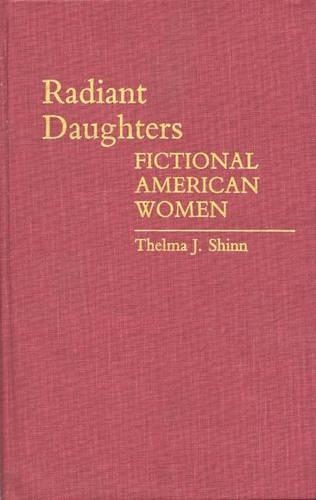
Radiant Daughters: Fictional American Women
(Hardback)
Publishing Details
Radiant Daughters: Fictional American Women
By (Author) Thelma J.Y. Richard
Bloomsbury Publishing PLC
Praeger Publishers Inc
24th June 1986
United States
Classifications
Tertiary Education
Fiction
Literary studies: fiction, novelists and prose writers
Literary studies: c 1900 to c 2000
Gender studies: women and girls
813.5409352042
Physical Properties
Hardback
234
Width 140mm, Height 216mm
454g
Description
In her examination of women characters created by American novelists from the 1940s through the 1980s, Thelma Shinn traces the emergence of new definitions of self and society as reflected in both the fictional characters she considers and in society as a whole. She argues that the social dislocation resulting from American involvement in World War II and the repercussions from that dislocation in American society initiated a cycle of growth in women that is accurately mirrored in the fiction of the period. Selecting more than 125 works of fiction, she examines the images of women and their lives created by both men and women writers. Particular attention is paid to the female self-images that have come to us through the writing of Eudora Welty, Carson McCullers, Ann Petry, Jean Stafford, Hortense Calisher, Shirley Jackson, and Joyce Carol Oates.
Reviews
New directions in feminist literary criticism are clearly evident in Shinn's analysis of fictional American women from the 1940s, the 1950s, and the 1960s. Shinn persuasively argues that the work is a study of the human condition because women characters reflect common human concerns in contemporary society. She offers an analysis of numerous women characters drawn by various writers, among them Saul Bellow, Hortense Calisher, Shirley Jackson, John Updike, and Carson McCullers. Echoing Emerson, she notes that each decade writes its own books, thus each generation defines the human condition within the social context. Shinn traces the evolution from the 1940s when women characters represented bitches or burdens to male characters rebelling against the forces and demands of society, to the revolution of the 1960s, when the fragmented selves of women began to mend. In an afterword on the 1970s and 1980s, Shinn sees maturation, a search for community on the part of both female and male characters as equal victims of a dehumanizing society. Endnotes, bibliography, and index are excellent. Highly recommended for graduate students and upper-division undergraduates.-Choice
"New directions in feminist literary criticism are clearly evident in Shinn's analysis of fictional American women from the 1940s, the 1950s, and the 1960s. Shinn persuasively argues that the work is a study of the human condition because women characters reflect common human concerns in contemporary society. She offers an analysis of numerous women characters drawn by various writers, among them Saul Bellow, Hortense Calisher, Shirley Jackson, John Updike, and Carson McCullers. Echoing Emerson, she notes that each decade writes its own books, thus each generation defines the human condition within the social context. Shinn traces the evolution from the 1940s when women characters represented bitches or burdens to male characters rebelling against the forces and demands of society, to the revolution of the 1960s, when the fragmented selves of women began to mend. In an afterword on the 1970s and 1980s, Shinn sees maturation, a search for community on the part of both female and male characters as equal victims of a dehumanizing society. Endnotes, bibliography, and index are excellent. Highly recommended for graduate students and upper-division undergraduates."-Choice
Author Bio
THELMA J. SHINN is Professor of English and Women's Studies at Arizona State University. She has published in such journals as Contemporary Literature, Explorations in Ethnic Studies, Nathaniel Hawthorne Journal, Literature and Psychology, and Modern Drama. She is the author of Radiant Daughters: Fictional American Women (Greenwood, 1986) and Worlds Within Women: Myth and Mythmaking in Fantastic Literature by Women (Greenwood, 1986).
